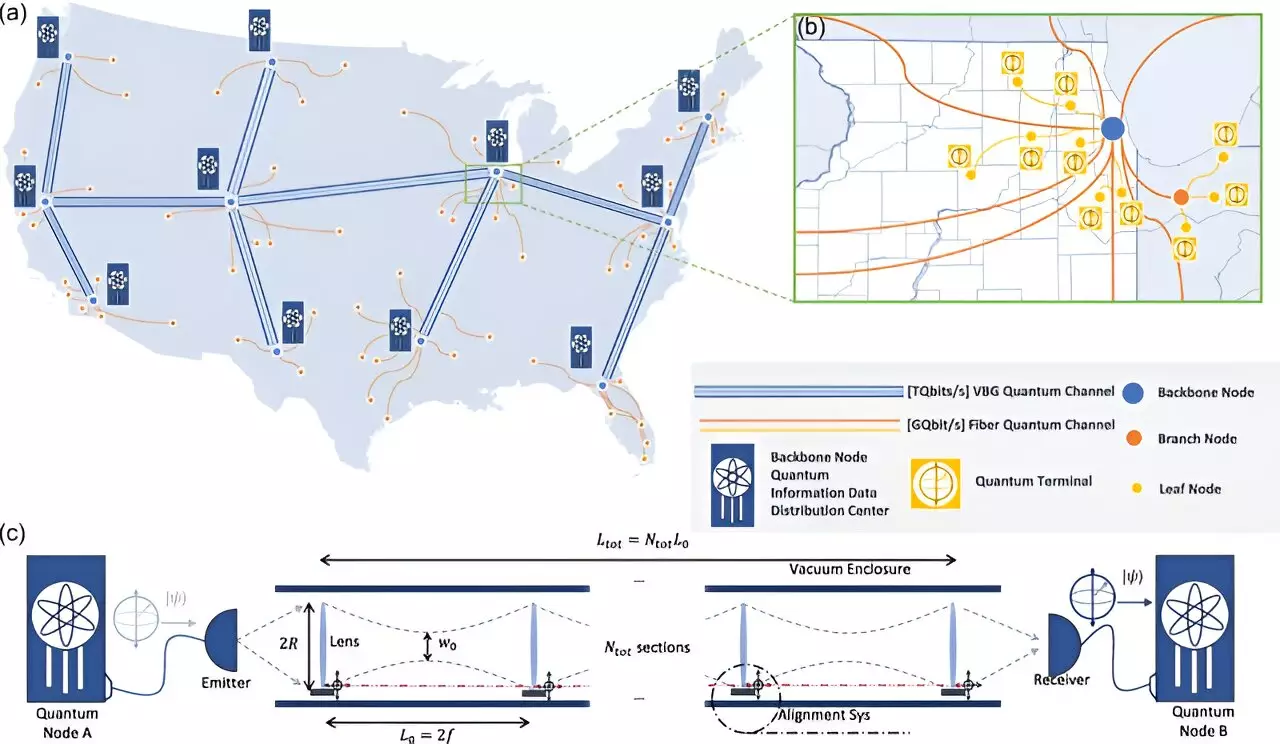The notion of quantum computing has emerged from the realms of theoretical physics to the precipice of practical application. Unlike classical computers that rely on binary bits (0s and 1s), quantum computers leverage qubits, which possess the unique ability to exist in multiple states simultaneously – a phenomenon known as superposition. This feature, combined with another called entanglement (where the states of two qubits become correlated regardless of distance), allows quantum systems to perform complex computations at unprecedented speeds. However, the sheer potential of quantum computing is hindered by its isolation; independent quantum computers lack the means to collaborate effectively and navigate vast data landscapes. This begs the question: How can we harness the full might of quantum computing? Emerging research hints at a transformative answer that reimagines the infrastructure of quantum communication.
Challenges in Quantum Connectivity
Building a functional quantum network hasn’t been straightforward. Current networking frameworks—predominantly classical—fail to support the nuanced requirements of qubits. As Liang Jiang, a leading authority in molecular engineering, articulates, “You can’t send a quantum state over a classical network.” What needs to be established is a method of transmission that safeguards the quantum properties of qubits over long distances. Traditional methods like fiber optics and satellite transmissions have shown promise but are fraught with limitations, primarily due to photon absorption in fiber optics and atmospheric interference in satellite communications.
Quantum information, for practical purposes, must remain coherent and intact as it travels from point A to point B. This necessity for integrity in data transmission amplifies the complexity of engineering a robust quantum network. Findings from the University of Chicago Pritzker School of Molecular Engineering (PME) have sparked new hope and ingenuity in overcoming these barriers.
A Bold Concept: Vacuum-Sealed Quantum Channels
Enter the groundbreaking proposal from PME researchers: a system of long vacuum channels designed to transmit quantum information. These channels would involve using vacuum-sealed tubes outfitted with precisely spaced lenses, capable of guiding photons over vast infrastructures while minimizing losses. At approximately 20 centimeters in diameter and with the prospect of operation over thousands of kilometers, these tubes could potentially transmit more than 1 trillion qubits per second.
The clever application of lenses placed within these channels seeks to combat the challenge of photon dispersion. Rather than allowing qubits to spread out and lose coherence, the lenses would focus and maintain the beam integrity across extensive distances. Comparatively simpler in technical requirements than those required for existing technologies, this medium vacuum approach may set a new standard for qubit transmission, making longer connections dramatically more feasible.
Interdisciplinary Collaboration and Possibilities
This innovative framework is not the brainchild of PME alone; collaborations with scientists from Stanford University and the California Institute of Technology illustrate the interconnectivity of scientific inquiry and the shared goal of pioneers in the field. The collective effort showcases an inspiring landscape where disparate expertise converges, forcing boundaries to extend beyond individual research realms. Each institution brings distinctive strengths, highlighted by their experiences with groundbreaking technology such as the Laser Interferometer Gravitational-Wave Observatory (LIGO).
The groundwork at LIGO provides a tangible perspective on overcoming analogous challenges involving the transmission of light over significant distances. Their experimental setup—to detect gravitational waves—underlines the viability of utilizing low-pressure vacuum environments, thus assuring that the quandaries anticipated with qubit transmission could find successful navigation through adaptative engineering.
The Future of Quantum Networking
The implications of successfully establishing a quantum internet are profound. The capacity for quantum computers to link up means harnessing collective computational power unprecedented and, essentially, transformative across sectors, including cybersecurity, telecommunications, and advanced data analytics. The potential applications stretch far beyond secured communication channels; they could redefine distributed computing networks, enhanced visual technologies in astronomy, coordinated systems for global positioning, and synchronization of time—efforts that promise unimaginable advancements.
Thus, while this journey from concept to reality teems with complexities—engineering challenges, political frameworks, and financial investments—the possibility that the community might ultimately roll out a cohesive quantum network feels closer. With the work of researchers like Liang Jiang and Yuexun Huang leading the charge, a future where powerful quantum machines collaboratively process vast oceans of data on a global scale inches nearer to realization. The gravity of this evolution in technology genuinely beckons excitement and establishes a firm case for relentless scientific pursuit.


Leave a Reply